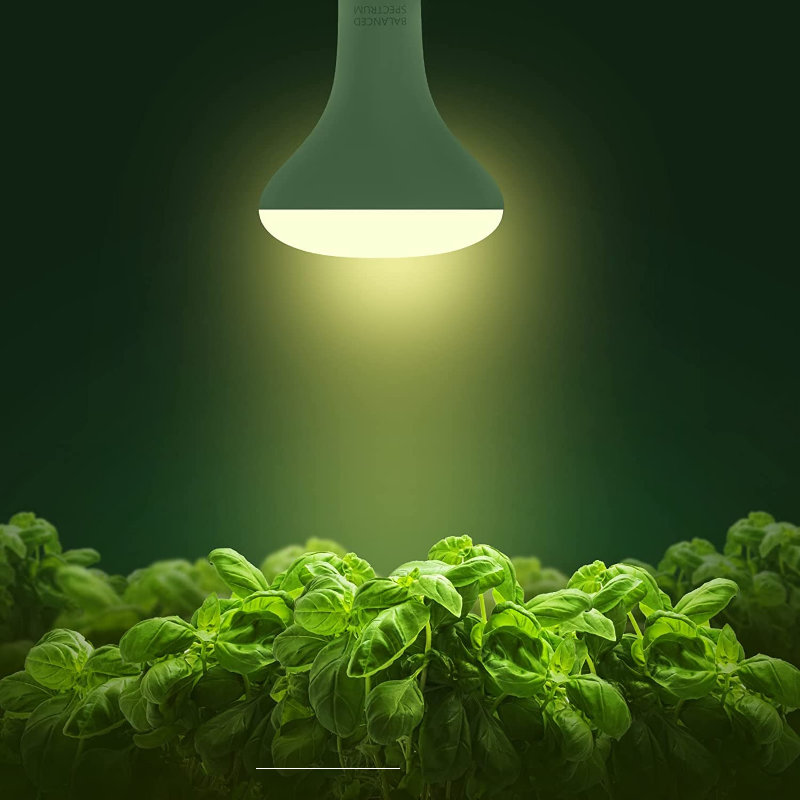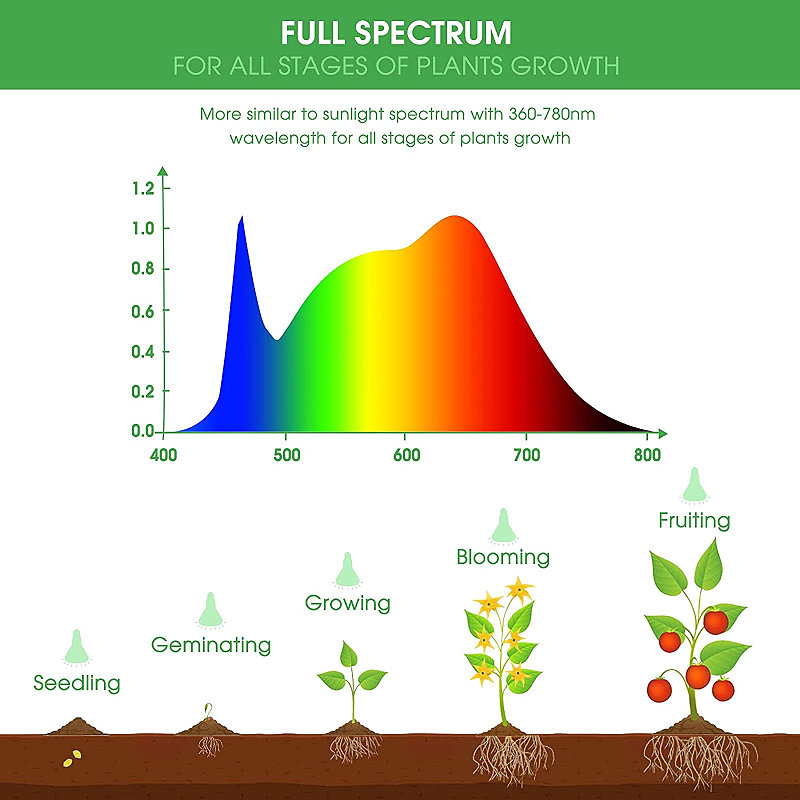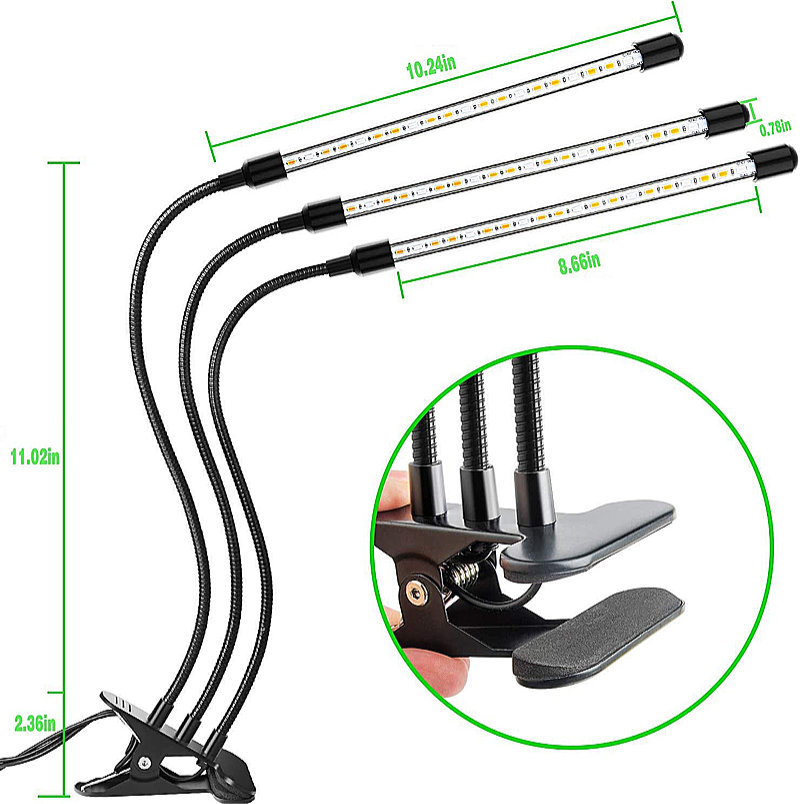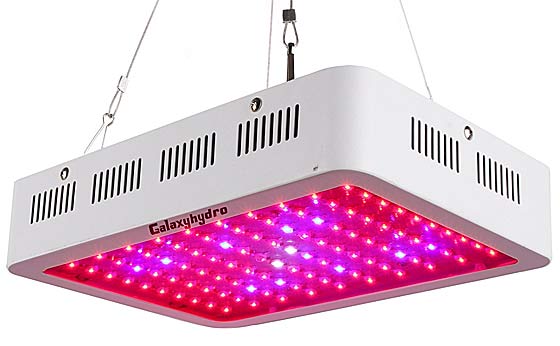Grow Lights Full Spectrum For Indoor Plants
Today’s ‘Grow Lights’ contain LED’s (light emitting diodes). LED technology has been around for a long time, and LED lights consume less electricity than the older style incandescent bulbs. And, they have a very long life span. Popular for indoor plants are LED grow lights that are full spectrum.
There are lots of grow light styles and ‘form factors’. In other words, there are many varieties, each with their own methods of installation and use. Grow light systems can get quite expensive, depending on your growing intentions and implementation. However, with that said, lets first look at a quick, easy, and cost effective way to get yourself some grow lights that are full spectrum…for indoor plants ranging from seedlings to maturity.
It’s simply a grow light reflector style bulb (BR30) that screws into a standard light bulb receptacle (E26). The following popular example is a full spectrum grow light reflector bulb.
12Watt, 120W Equivalent, 1000 Lumen
(amzn)
You might use it with a clamp light fixture (enabling lots of mounting/clamp-on options). Another useful mounting option utilizes a hanging extension cord with built-in bulb receptacle at one end (pendant light cord). This allows you to adjust the height as the plants grow (here’s one including on/off switch).

What is a grow light full spectrum bulb?
A spectrum is a range. In this case, a grow light that’s full spectrum is attempting to mimic the range of wavelengths of the sun, to the extent that it relates to plant growth and photosynthesis. That is, within the technological limitations of the light source.
Manufacturers may also tweak the spectrum (wavelength combination) to facilitate plant growth. For example, chlorophyll (in plants) converts light energy to chemical energy – and evidently absorbs mostly red and blue during photosynthesis.
Grow lights are designed to provide Photosynthetic Active Radiation (PAR) so the plant can undergo photosynthesis like outside in nature (although nothing is better than natural sunlight).
LED grow lights can be customized/designed for specific wavelengths of light. However instead of just one wavelength (color), studies have shown that combinations of green, red, far-red and blue light have beneficial effects on plant growth. Plants grow well under this combination of light. Some call this – full spectrum.
Full spectrum LED grow lights attempt to provide the full array of colors found in sunlight. But again, to an extent within technological limitations of the light source – and/or purposeful design parameters whereby manufacturers may claim patent.
Grow Light Full Spectrum Wavelength
Here’s an example color-graph indicating wavelength of the full spectrum grow light that I’ve linked above (the BR30 reflector style) from a company named ‘Briignite’.

Warm, Cool, Full-Spectrum color temperature
Bulbs are labeled with numbers (for example 3000K or 6000K) which indicate the color temperature of the light with reference to the Kelvin scale of measurement. A 3000K bulb will appear yellower and may be called warm. A 6000K bulb will appear white or have a bluish tint, and may be called cool.
Full-spectrum grow lights offer a light output color combination of both cool and warm light for the best of both worlds.
Grow Light with Adjustable Gooseneck
Here are a few other styles of grow light. I also have the following which is unique with an adjustable gooseneck for each of the three lights. It’s not very big, but perfect for a potted plant during winter. It has adjustments for a timer and intensity.
3 Head – Adjustable
(amzn)

Hanging Grow Light Full Spectrum
The following brand is popular. A convenient hanging mechanism makes it fairly easy to install. Perhaps a ceiling hook with decorative chain for adjusting height.
Hytekgro Hanging-Style with 250 LED’s
(amzn)

Do any of you use plant grow lights?
What has been your experience?
[ Read: Best Color Temperature For Outdoor Security Lighting ]

